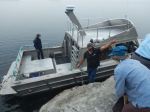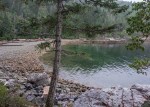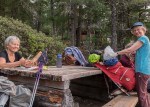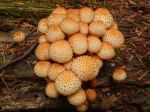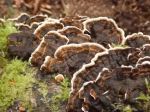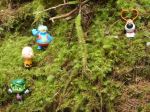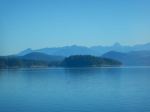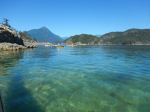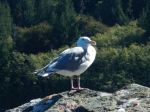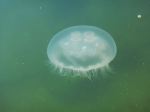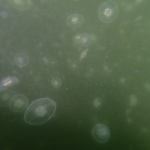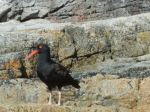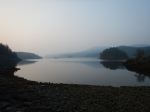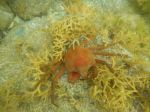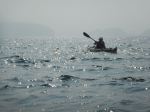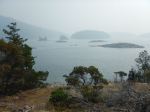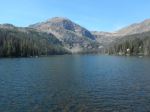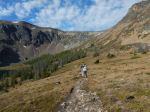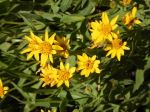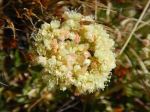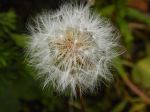| Activity | Multi-day kayaking |
| Destination | Jedediah Island via Texada Island |
| Date | 7 to 11 Sept 2021, Tuesday to Saturday |
| Trip Coordinator | Vic Gladish |
| Contact Info | vicgladish@gmail.com; 250-285-2111 |
| Description | Three days on the water; one travel day to get there and one to get home; Camp on Texada on day 1 with the crossing to Jedediah early on day 2. Return to Texada on day 5 and on to ferries and home. Details will be posted soon. |
| Meeting Place | Quathiaski Cove ferry lineup at 0630 |
| Departure Time | 0705 ferry Quathiaski Cove |
| Difficulty |
A 2km crossing from Texada to Jedediah makes this, depending on weather, a more difficult trip. |
| Cost | About $200 for ferries and camping fees |
| Trip limits | 6 |
| Dogs? | No |
| Notes: |
Sept 7 – Travel day; Meet at Q-Cove Ferry by 6:30 AM; to Little River to board 0955 ferry to Powell River; hopefully onto the next ferry to Texada Island; Drive to Shingle Beach Campsite
Sept 8 – Paddle to Jedediah Is
Sept 9/10 – hiking/paddling Jedediah/Lasqueti/ etc
Sept 11 – Paddle back to Shingle Beach; ferries to Powell River (330 pm)/ Comox (510 pm)/ Quadra (??)
This itinerary could easily be shortened by a day for whatever reason. However, it does not allow any time to visit the Townsite Brew Pub
 . .Please take the time to read the club’s paddling guidelines – https://qioutdoorclub.files.wordpress.com/2018/07/paddling-guidelines-aug2018.pdf
If the weather forecast for the week looks windy/wet on Sunday, Sept 5 we will communicate re cancellation.
Plan to be self-sufficient for camping. NOTE: there is no drinking water on Jedediah so bring enough water for 4 days.
Feel free to email, text (250-287-0459), or call Vic Gladish
|
Category Archives: BC Mainland
Trip Report – Sunshine Coast Trail – 15-19 Sept 2020
In order to encourage more participants and because of the dates of the club’s kayak trip, this trip’s goal was changed, to focus on the Malaspina Peninsula, and was delayed by one week. Being well into September there was some concern about the good weather holding. Although we did leave with this year’s southern fire smoke in the air, the timing regarding weather was perfect, as the first daytime rain followed immediately after reaching the end of our trek. It turned out to also be auspicious timing regarding dates, as we only encountered 4 other back packers, and only shared a campsite on the first night.
Day 1 – Tuesday: Leaving the ferry behind at 10:15, we left one vehicle at a friend’s house near Mowat Bay, near the end of our walk, and drove on to Lund with our other vehicle, catching the Lund water taxi at 2 pm, destination: Sarah Point. The taxi dropped us off in hazy conditions on a dry rock shelf, from which, after the “before” photos, we donned our lightweight backpacks and started the walk through arbutus and manzanita groves to Feather Cove, our first campsite. We shared this site, looking east towards Malaspina Inlet, with a young kayaking couple, and were visited frequently by a curious sea lion as we set up camp. At this point, one is in Malaspina Provincial Park, and the campsite is outfitted with an outhouse, food cache and picnic table. This was truly roughing it. This is where one of our group revealed their secret weapon, a backpacking chair, and quest for seating began!
(click to enlarge photos)
- Arriving at Sarah Point
Day 2 – Wednesday: Wanting to gradually add to each day’s mileage considering the placement of campsites along the route, we rose around 7 am, stretched as all conscientious aged packers do, and were on the trail by 9. Our goal was a 9.2 km hike to Wednesday Lake. At Hinder Lake outflow we were able to fill up with water.
The route took us through a green mossy forested landscape, with the first two thirds including some pleasant forested walking trail. This disappeared the last kilometer and a half before Wednesday Lake, as we had 2 successive uphill grunts up root filled inclines, until finally gaining site of Wednesday Lake. The old, non-parks standard outhouse was in stark contrast to our cushy appointment at Feather Cove, and the first camp clearing was rudimentary and a poor prospect for clean drinking water. Luckily, a short distance around the lake shore brought us to the real campsite, with adequate flat space for our 3 tents on a rock bluff, and good access to water and a swim! We walked about 6 hours that day, and being our first day of real backpacking, we were very ready to lose our loads here. We were humbled later in the early evening when a young speed backpacker dropped in, after leaving Sarah Point only 3½ hours earlier that day. Her plan was to hike the entire Sunshine Coast Trail, some 150 km, in 4½ days. We gave her all the experienced hiking tips we could offer in about 10 seconds, and bid her good evening.
Entertainment that evening was shared between stealing a backpacking chair, and watching three seasoned backpackers comically hone their technique of launching a rock-weighted line over a tree limb, to provide a food cache; entitled: Quest for Rocks. Nominations for the Darwin Awards have been submitted!
- Departing Feather Cove
- Feather Cove
- Bliss Portage Hut under construction
- View of Malaspina Inlet
- Oyster mushroom
- Camp at Wednesday Lake
Day 3 – Thursday: Again we were back on our route by 9 am. We had to climb out of Wednesday Lake but the trail had some pleasant forested walking before our accent to the Gwendoline Hills. The walk along this ridge was fairly flat, but again we climbed as we neared McPherson Hill, after leaving Malaspina Park behind. After a walk through lovely old growth, we reached Manzanita Bluff, where a beautiful mountain hut awaited, and an expansive view of the Salish Sea would have been our reward, if it hadn’t been obscured by alternating smoke and fog. Unfortunately, we could barely see the darker mass of Hernando Island in the distance. Nevertheless, it was a beautiful lunch spot with picnic tales. We now descended through commercial forest lands, containing some lovely old trees, where the forest companies have allowed a right of way for the trail. Later, we came to Emil’s Bench, dedicated to Emil Kormpocker, a veteran logging contractor who had the foresight to save a stand of old growth trees in this area. Unfortunately, the younger forest around us obscured views of the saved old growth. Here you also have a view of Okeover Inlet below. Eventually, through some older forest, we crossed over Malaspina Road, and continued on to our next campsite, Fern Gully Creek. Here we had one of our darkest campsites, thanks to some old growth giants, There was adequate space for tents here and a rustic table. Although we had water, the pools may be drier at the end of a hotter summer. And we could find no outhouse.
- Lunch at Manzanita Hut
- Manzanita Hut
- Arbutus
Day 4 – Friday: We were back on the trial this day around 9 am knowing that we would add the first real increase to our daily distance, covering 13 km. The first part of this day had us climbing up the Thunder Ridge Trail.. After the Plummer Creek Road we were treated to an old forested rail grade, which lead us to a rest spot at Plummer Creek Bridge. Below, a 5 minute walk leads to the Plummer Creek campsite, near the bottom of Toquenatch Creek. After our break, about an hour later, we arrived at Toquenatch Falls, where water still cascaded over rocks, although nowhere the force that would exist after a rainy fall. The trail continued up the creek valley, sometimes using old rail grade, and eventually comes to a newer logging area where we had another reminder that we were out of the park, as we could hear a logging truck close by, lumbering up a grade. Eventually, the trail took us to a road system, and the Homestead Forest Recreation site. This was accessible by vehicle, and after a quick lunch held no real interest for us. Here, we met, Nick, a young fellow from Victoria, who had passed us the previous evening at Fern Gully, but was now lying on the ground, in some obvious discomfort, nursing a nerve injury from long bouts of car driving. We could only offer ibuprofen and encouragement, but Nick seemed to be familiar with the condition and was weighing his options. The afternoon then brought us up a climb to Rievely Pond with its lovely hut in an open spot above the pond. Water was not the best here, but we enjoyed a rest and continued to our intended goal, the Appleton Creek Bridge Campsite, a lovely open site amongst several old growth giants, next to a very good running water source. Above the campsite is a trail leading up to a bathing pool in the creek. We had benches at camp for cooking and sitting, and an outhouse, although its location was hidden to us until the next morning.
Because of the weather forecast, we set up two tarps to be prepared for the next morning. Two trail walker/runners passed by, who were doing the peninsula trail in one day, They were only carrying fanny packs and intended to continue through to Powell River with just 2 hours left. We did celebrate our last camp on this Friday evening by sharing some extra food and having a small campfire.
- Fern Gully old growth
- Puff balls
- Toquenatch Falls
- Turkey tail fungus
- Trinkets on Trinket Trail
- View? from Gibraltar Bluff
- Rievely Hut
- Yellow-spotted Millipede
- Tiny, tiny red mushroom
- Swimming hole at Appleton Creek
- Amanita
Day 5 – Saturday: This morning, the darkness of the forest and the night’s rain had us up a little later, but we were on the trail a little after 9. We had another 15 km to reach the end of our route. The descent down Appleton Creek was a mossy forest trail with several stops for small cascades and the larger Gorge Falls. Further along we entered lands given by the Sliammon people to allow the trail to continue to Sliammon Lake and Little Sliammon Lake, with its picnic pavilion, boat wharf and road access. The trail around the lakes is an up and down workout around bluffs and roots, but only for a portion of the days hike. From Little Sliammon we mostly followed old forest roads down to Sunset Park, and increasingly saw bear scat, and many friendly day hikers as we approached the suburb of Wildwood. At Sunset Park, we dropped our packs and congratulated ourselves. Two of us continued along streets to the bridge at Powell Lake outlet, and then again picked up the Sunshine Coast Trail to Mowat Bay, just down the road from where we had left our parked car. The timing was perfect, as we encountered our first daytime rain just before we reached Mowat Bay.
- Breakfast at Appleton Creek
- Falls on Appleton Creek
- Coral mushroom
- Theyeth Lake
- Lunch at Little Sliammon Lake
- Old roads near Powell River
This trail is obviously not a walk in the park, carrying loaded packs for 5 days. But, after our plan to gradually build up each days distance, we not only found it manageable, but enjoyable and well worth the effort. It offered a great deal of variety within the coastal forest setting, including views, water courses, a variety of forests, and some excellent camping. This part of September proved to be a good choice, as there was little traffic on the trail, and offered many opportunities for solitude. The group turned to have excellent dynamics and the common love of the outdoors, plus an ample dose of good humour, allowed us to get beyond familiarity. A very positive journey!
Brent
Thanks to Brent, Norris, and Diana for the photos
Trip Report – Desolation Sound – 8-13 Sept 2020
This trip was rescheduled from August in hopes that Desolation Sound would be less busy in September. It probably is, but still busy enough in this exceptional pandemic summer, especially at the Curme Islets campsites. Compared with our usual paddling destinations, there were a large number of young people (well, young being anyone under 40…), many of them in rental kayaks, and some in more unusual craft. Notable sightings (of creatures human and otherwise) are described below.
Day 1 – Tuesday: Four of us launched from Squirrel Cove on Cortes Island about 11 a.m. on Sunday, having lined up around 8 a.m. to catch the 9:05 ferry from Heriot Bay. The weather was calm and sunny for our crossing to the Martin Islands where we stopped for lunch. From the Martins, we headed to the north end of Mink Island and around the top to the Curmes. We had a little wind and chop on the crossing. We were somewhat taken aback to find two of the three campsite locations full by early afternoon. Fortunately, we were able to nab three of four remaining tent pads on East Curme. All the sites in Desolation Sound Marine Park have designated tent pads, an outhouse, picnic tables and/or benches, and (on the mainland sites, bear caches). Access in the Curmes is awkward in most spots on most tides. After setting up camp, some of us went swimming in the warm – slightly soupy – water, and all made an early night. One of the consequences of the younger demographic was a certain amount of partying, although with darkness by 8:30 and no campfires, things settled down about 9:30 or 10 (which is quite late on kayaking days!). The stars were absolutely dazzling. 13.7 km; 4 hours.
Notable sighting: A group consisting of two senior lady paddlers and two couples in doubles came looking for a tentpad about 5 p.m. and spent some time paddling about before the two singles took the last site on East Curme and the others disappeared to seek their fortune elsewhere. Like us, they hadn’t expected the crowds….
(click to enlarge photos)
- View from the ferry
- View from Squirrel Cove
- Desolation Sound
- View from East Curme Bluff
Day 2 – Wednesday: We headed out about 9:30 for a day trip to Prideaux Haven and beyond. Exceptionally calm, almost glassy conditions, and hot (although not the hottest yet). Very pleasant paddling through the islets, with a break at Laura Cove (where we were serenaded by a boat owner playing his violin). Then on to a rocky outcropping just beyond Price Point for lunch, and back home (taking the route outside Eveleigh Island and back though the gap between Otter Island and the mainland). More swimming, dinner, and planning for the next few days. By this point we had decided to order a water taxi to return us from the north tip of Malaspina Peninsula to Squirrel Cove, as three of us needed to be back fairly early, and it looked like a longish slog through open water. This later proved to be an inspired decision. 20.0 km; 6 hours.
Notable sighting: Half an hour before dark, a young couple paddled up in an inflatable double (about as wide as it was long), accompanied by their cat. Fortunately, some parties had moved off West Curme, and they were able to find a tent pad.
- View from Prideaux Haven
- Channels among the islets
- Laura Cove
- Phantom Hemlock Looper
- Sea Gull
- Lunch in Homfray Channel
Day 3 – Thursday: Off about 9:00 a.m. to Hare Point on the northeast shore of Malaspina Inlet, about 2 kilometres from Zephine Head. Another hot still day. Quite a bit of room at the campsite, with a fairly decent beach, although the canoe/kayak run is only wide enough for one boat at low tide. The tent pads are located on either side of the cove, with outhouse/bear cache/picnic table for each group. The westerly, more scenic area is up a fairly steep trail – we defaulted to the lower group of tent pads – still a bit of a scramble up the rocks. The afternoon was very hot – we spent much of it looking for shade. Two of us practised self-rescue (and have the bruises to show for it). This activity generated quite a bit of amusement for other kayakers: “Oh gosh, there she goes, right over the other side.” Much quieter location than the Curmes. Early night. 9.6 km; 2 hours.
Notable sighting: Ultra light aircraft on pontoons flew over us en route to Hare Point. Took a while to figure out what it was.
- Breakfast on E Curme Island
- Sea star
Day 4 – Friday: Off about 9:30 toward Grace Harbour for a day trip. Not such a warm day, with the smoke beginning to move in. Grace Harbour is a popular anchorage, although not very busy when we were there. Only 2 or 3 tent pads; probably not too much privacy in summer with boaters marching through toward Black Lake. There is a creek at the head of the bay, east of the campsite. We walked up to the lake through a pleasant cedar forest, with the remnants of logging operations in a few places. About 15 minutes walk each way. There is a small cleared area for swimming access but slippery on the rocks. After lunch, we paddled back to the campsite and passed on the way a colony of Steller (and possibly also California) sea lions. We had seen Stellers fishing in the cove, and occasionally popping up rather close to our kayaks. Back about 4 p.m. More rescue practice – more bruises…. 16.0 km; 5¼ hours.
Notable sighting: A young couple on standup paddleboards with gear strapped fore and aft arrived at the campsite about 5:30. The operation looked slow and a bit hazardous, but they apparently like it.
- Phantom Hemlock Looper
- Malaspina Inlet
- The bay at Hare Point
- Moon jellyfish
- Logging relic
- Black Lake
- Grace Harbour
- Abundance of moon jellyfish
- Oyster Catcher
Day 5 – Saturday: Away at 9 a.m. In order to have time to visit the Copeland Islands and still be picked up Sunday morning by the water taxi, we upped stakes at Hare Point, and nabbed tent platforms at Feather Cove (about 45 minutes paddle). Feather Cove has a decent landing beach, although exposed to waves and wash. Another 2-part campsite, with tent pads on the hill, and back among the trees down by the beach. This site is on the Sunshine Coast trail, so is used by both hikers and paddlers. In very thick smoke, we paddled to Sarah Point, down the peninsula toward Bliss Landing, and across to the most northerly of the Copeland Islands. For the first time on the trip, we had some significant wind (in our face, of course). There are at least two and possibly three campsites in the Islands. We entered North Copeland Island through a small gap into a shallow bay with easy landing. At this large site, there are three sets of tent pads; the most westerly grouping is very scenic but with what looks like trickier access. Quite a few empty pads. After lunch, we paddled by the next island with tent pads, and around a larger island with several small notches and coves for anchorage. After darting across Thulin Passage between cruising and fishing boats, we headed north again, with a stop at a lovely sandy beach just north of Bliss Landing. An old homestead with some remnants of buildings, the site has a very productive collection of old fruit trees. Some of the apple trees were about 40 feet high. Unfortunately, it was very obvious that this is a place beloved by bears, whose reach is about the same as ours. Back to camp about 5:30, having enjoyed the following wind and a bit of a favourable current. 22.9 km ; 7¼ hours.
Notable sighting: A young couple in rented kayaks showed up about 6 p.m. with an astonishing amount of gear tied to the decks of their boats, including a five gallon water container (full). As they were leaving to find a campsite at Hare Point, one of us was unable to resist suggesting to them that the location of the water container was not the best of ideas…. Not sure how this advice was received, but one has to try. Notable non-sighting: About 2 o’clock in the morning, distant shouting and banging were followed by splashing and loud snorting. The bear (as we assume it was…) did not arrive in our locale. Judging by the trail of water leading from the beach up the hill behind our tents, we concluded that the bear had been chased off the hillside tent area, ran down to the water, splashed across, and took off heading south.
- Smoke at Malaspina Inlet
- Spider crab
- Leather sea star
- Cliffs in Thulin Passage
- Views from North Copeland Island
- Bay at North Copeland Island
Day 6 – Sunday: Up early to be ready for the water taxi to arrive at 9. Very, very smoky. We were relieved not to have to make a 3+ hour trip in near zero visibility. Duncan Pollen from Lund delivered us safely to Squirrel Cove, and helped carry the kayaks up a very steep ramp. We reached Whaletown shortly after 11, and one of us was lucky enough to be shoehorned aboard the 11:50 ferry. The others left on the 1:50 sailing. Everyone home by mid-afternoon. Notable sighting: While we were waiting on the beach, a Steller sea lion showed us how to catch fish. Grab the salmon, shake it violently, and gulp it down head first. Worked for him (or her).
- Water taxi at Feather Cove
As mentioned above, this trip was quite different from our more usual paddles to less accessible and popular locations. It was mostly more relaxed, with shorter distances. The scenery is lovely, of course, the water is warm and having some basic services at the campsites is convenient. Almost certainly, COVID is responsible for the large number of paddlers, some of whom appeared to be out for the first time. Fortunately, the weather was very calm, and presumably there were no problems with overloaded boats or less-than-seaworthy conveyances encountering challenging conditions. We did hear from the skipper of the water taxi that there had been more than the usual number of kayakers in trouble this summer. We enjoyed our time together as always.
Darcy
A couple of useful links for trip planning:
http://bcparks.ca/explore/parkpgs/desolation/camping.html
https://www.bcmarinetrails.org
Thanks to Norris and Val for the photos!
Multi-day Kayaking – Desolation Sound – 8-13 Sept 2020
| Activity | Multi-day kayaking |
| Destination | Desolation Sound |
| Date | 8 to 13 Sept 2020; Tuesday to Saturday |
| Trip Coordinator | Darcy Mitchell |
| Contact Info | mitchelldarcy51@gmail.com; 250 923 5540 |
| Description | Multi-day paddle to Desolation Sound, launching from Squirrel Cove. Itinerary dependent on participant interests and weather. Here is the link to kayak campsite information: http://bcparks.ca/explore/parkpgs/desolation/camping.html |
| Meeting Place | Cortes ferry line-up, Heriot Bay |
| Departure Time | 8:00 to catch 9:05 Cortes Ferry |
| Difficulty |
Moderate to challenging |
| Cost | Ferry costs and nightly costs for camping within the Desolation Sound Marine Park |
| Trip limits | Minimum 4 – maximum 6 to 8 depending on number of tents |
| Dogs? | No |
| Notes: | All participants must observe club paddling guidelines including demonstrated ability to perform assisted and self-rescue. If you are interested in this trip, please contact the coordinator no later than September 1. Pandemic protocols will be observed. |
Multi-day hiking – Sunshine Coast Trail – 15-20 Sept 2020
| Activity | Multi-day hiking |
| Destination | Sunshine Coast Trail |
| Date | 15-20 Sept, Tuesday to Sunday (date could still vary by a day) |
| Trip Coordinator | Brent Henry |
| Contact Info | brenthenrys@gmail.com or 250-205-1106 (phone or text). Contact the coordinator in by the end of August |
| Description | A 4-5 day trip. Participants would take two cars on the ferry to Powell River. We would park one vehicle at Lund and water taxi to Sarah Pt, hiking the Malaspina Peninsula portion of the trail back to Powell River. We would hike roughly 10+ kilometers per day. Due to covid-19, the cabins are off bounds, and small tents /shelters must be carried. Coordinator has an extra 1 person tent and bivy that could be loaned out. A water treatment method should be carried, and at least 2 liters must be carried, possibly a third bottle. |
| Meeting Place | Little River ferry terminal |
| Departure Time | 9:30 at the ferry terminal. We would catch the 9:55 ferry. |
| Difficulty | Moderate up and down mixed terrain. |
| Costs | Ferry, parking and water taxi costs. |
| Trip limits | 6 |
| Dogs? | No |
| Notes: | All participants should be self sufficient and willing to practice safe pandemic protocols, as well as having a mask available for the ferry and public transit. Exact route, kitchen requirements, food, first aid will be agreed upon by participants.
Coordinator will carry an Inreach satellite texter and a vhf radio. If you are interested, please contact the coordinator by the end of August. |
Trip Report – Cathedral Lakes Prov Park – 6-10 Sept 2018
Five of us went to Cathedral Lakes Provincial Park in early September, in spite of two evacuations in August due to wildfires. When we arrived in Keremeos the back burn, right at the edge of town and close to the Cathedral Lakes access road, was very dramatic. Les went up a day early, checked into the Lodge, explored the four nearby lakes, and enjoyed the hot tub. The rest of us were driven up the steep, rough road to about 2,000m on Thursday morning. No one traveled in the famed unimog. Each day dawned fairly clear and then summer clouds developed around noon, which was consistently better than the forecast. The campground was nearly empty of people, but we saw Mountain Goats wandering through almost every morning.
After the four of us set up camp on Thursday on the edge of Quiniscoe Lake, we hiked around Scott Mountain on the Diamond Trail. This was a great introduction to the beautiful alpine meadows, the larch groves and open alpine ridges, on a relatively easy trail. Although the vast majority of the flowers were past, there were a few persisting into September. This was our smokiest afternoon. We had close encounters with Pica and Marmot on this hike. 8.9 km; 3½ hours; 300m total elevation gain.
The following day, Friday, was our most ambitious hike, starting out to the beautiful, alpine Glacier Lake and then hiking up steeply to the rim. Once on the rim there are great views, although it wasn’t completely clear, and the hiking is quite easy. We could see that there were forest fires everywhere around us, but not immediately threatening. There are great geological features along the rim: the Devil’s Wood Pile of columnar lava, the Stone City with weathered and decomposing granite, and the Giant Cleft, a narrow, vertical gap in the cliff face. After visiting these, we returned to the Stone City and descended to Ladyslipper Lake. The trail down is steep, and in some places unconsolidated. Nearer to the Lake the trail passes through great boulders and larches. Ladyslipper Lake is lovely and the visitors who were fishing found it easy to catch trout there. 14.6 km; 8¼ hours; 500m elevation gain (to 2,600m), but more much total gain with undulations on the rim.
On Saturday, we had a more gentle, but extremely beautiful hike to Goat Lake. We hiked down the switchbacks to Goat Creek and then followed the trail up to the Lake. The creek and the lush vegetation along it were lovely. Goat Lake is a beautiful alpine lake surrounded by larches, with a small beach fed by a gully of decomposed granite, and backed by the cliff wall of Grimface Mountain and the rim. We all had dinner in the Lodge Saturday evening. The food, company, and fire in the fireplace were all very congenial. 12.3 km; 5 hours; 450m total elevation gain.
On Sunday, Les and Diana paddled on Quiniscoe Lake in the morning and hiked the lake tour to Lake of the Woods, Pyramid Lake and Glacier Lake in the afternoon. The rest of us hiked up above the waterfalls which flows into Quiniscoe Lake and up the steep, unconsolidated route to the rim. From there it was an easy hike up to Quiniscoe Mountain (2551m). It was cool and breezy, but we were entertained by a Mountain Goat wandering by. We descended to Glacier Lake, where there were some photogenic deer, before continuing on and exploring Lake of the Woods. 11.2 km; 5¼ hours; 600m total elevation gain.
The weather became very cool and rainy toward evening and we once again retreated to the Lodge for Les’ excellent fire in the fireplace. It rained quite a bit overnight, but the forecast snow didn’t materialize (just a few flakes). In the morning, the sun came out, we broke camp with wet tents, and made the trip back down the rough road to Keremeos.
This is a spectacular area, with exceptional access to alpine scenery provided by the shuttle up the hill. It’s sad to see the devastation that the Spruce Bark Beetle has caused in this forest, but the biodiversity in the alpine meadows is wonderful. It would be lovely at a variety of seasons: earlier the flowers would be out and latter the larches would be golden.
Debbie
Thanks to Norris, Les and Diana for the photos.
(click on photos to view larger)
- Backburn at Keremeos
- Lodge fireplace
- Quiniscoe Lake and Mountain
- Campsite
- Mule deer
- Grouse
- Lupin
- Fireweed
- Alpine meadow in wildfire smoke
- Pica
- Marmot
- Arnica
- Rim above Glacier Lake
- Pyramid Mountain
- Above Glacier Lake
- Glacier Lake
- Hiking on the rim
- Views from the rim
- Ladyslipper Lake
- Devil’s Wood Pile
- Wildfires in the distance
- Fall colour near Stone City
- Near Smokey the Bear
- Giant Cleft
- Ladyslipper Lake
- Grimface Mtn & the rim cliff
- Cliff with the Cleft
- Mountain Goats
- Mountain Goats
- By Goat Creek
- Goat Lake
- Goat Lake
- Goat Lake
- Fall colours
- Arnica
- Above Quiniscoe Lake
- Mountain Goat on the rim
- Mule Deer near Glacier Lake
- Lake of the Woods
- Boardwalk near Lake of the Woods
- Quiniscoe Lake
- Our tracks over four days
Multi-day Hiking – Cathedral Lakes Prov Park – 6-10 Sept 2018


